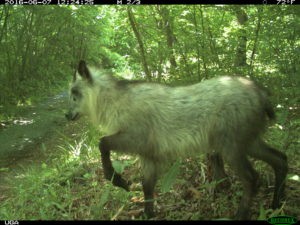
The Fukushima Daiichi nuclear disaster was considered to be one of the greatest disasters of the 21st century. However, nature has once again found a way as scientists were able to discover that wildlife is surviving in the area ten years after the disaster -- even thriving in the absence of humans.
In a recent journal published in the Journal of Frontiers in Ecology and the Environment, a collection of wildlife photographs of more than 20 species of animals are analyzed. These animals -- macaques, raccoon dogs, wild boar (the most prevalent), and the Japanese hare -- were able to establish their population in the area. Wildlife biologist James Beasley from the University of Georgia explained in a statement that the recently published journal contains the primary evidence that various species of wildlife are occurring throughout the Fukushima Evacuation Zone -- and this is regardless of the fact that they are living with the presence of radiological contamination.
NATURE FINDS A WAY
The Fukushima Evacuation Zone was built back in 2011 immediately after the tsunami hit the area and devastated the nuclear power plant. The evacuation zone served as home to those living within 715 miles of the accident area. It was in 2016 when the government gradually allowed people to come back to where the accident hit. Understandably, the people are hesitant and it was recorded that only 5% of the original population returned in the area. Since the area is now largely deserted, this gave the animals an opportunity to live.
Biologists gathered and compared photographs captured from three zones within the area that differ in rates of human presence. One area is devoid of human habitation due to high levels of contamination. In the second area, there are only limited humans settlements also due to high levels of contamination, albeit lesser than the first area. The third area is completely inhabited. Beasley and his colleagues were able to collect more than 267,000 photographs of wildlife in a span of 120 days. Several species of wildlife have flourished in the absence of humans and the photographs are the proof. Some of the animals would appear more frequently in uninhabited areas. A perfect example would be the wild boar, the most abundant species recorded in this study. There are at least 46,000 photographs captured with the boar in it and the researchers found out that its population is three times more abundant in the areas where human activity is nonexistent.
Although not all animals preferred living in the quiet and away from humanity's curiosity. The Japanese serow, for instance, prefers the areas inhabited by humans more than the isolated places. The biologists theorized that choice is the serow's primary adaptation for survival as living within the vicinity of humans lessens the threat of being attacked by wild boars.
This disaster-brought rewilding isn't quite the first time. The so-called wildlife bloom was also observed in another nuclear disaster site -- the infamous Chernobyl -- where species of wolves and other mammals flocked the area and were thriving primarily because of the absence of humans. In an article written on Newsweek, Beasley explained that the population of animals around the disaster site of Chernobyl increased several years after the disaster. These animals now have an abundant population in the area. He also says that since the amount of radiation released in Fukushima is lower than that of Chernobyl, it is not surprising, at all, that wildlife will flourish in the area. "However, what was unexpected is the rate and extent to which populations of wild boar and other species have increased in number despite extensive control efforts to reduce their population."
In both cases of Chernobyl and Fukushima, the abundance of the animal populations in the radiation-filled area does not necessarily indicate the health status of the animal. Beasly explains that while it is still known that exposure to radiation can damage the reproductive ability of an animal, it does not manifest on a widespread level yet.
© 2025 ScienceTimes.com All rights reserved. Do not reproduce without permission. The window to the world of Science Times.












